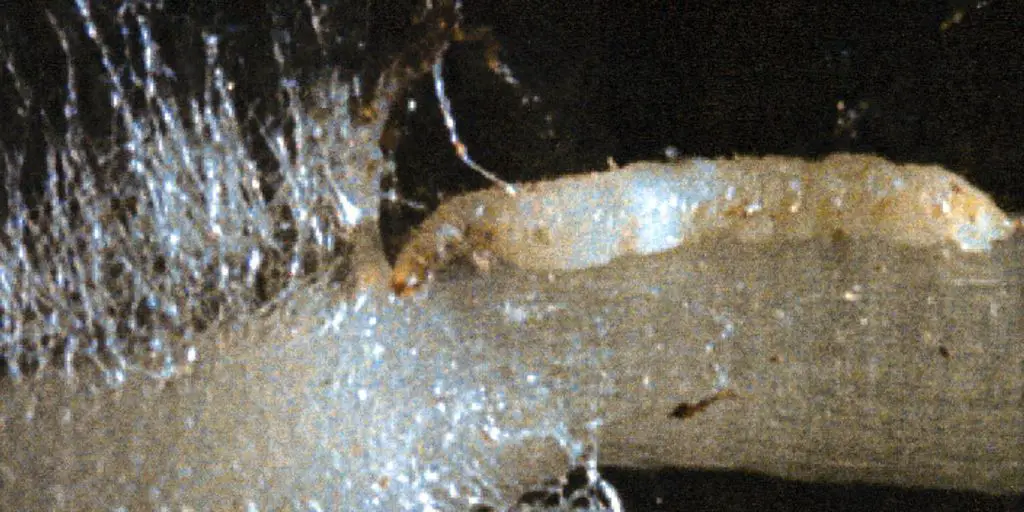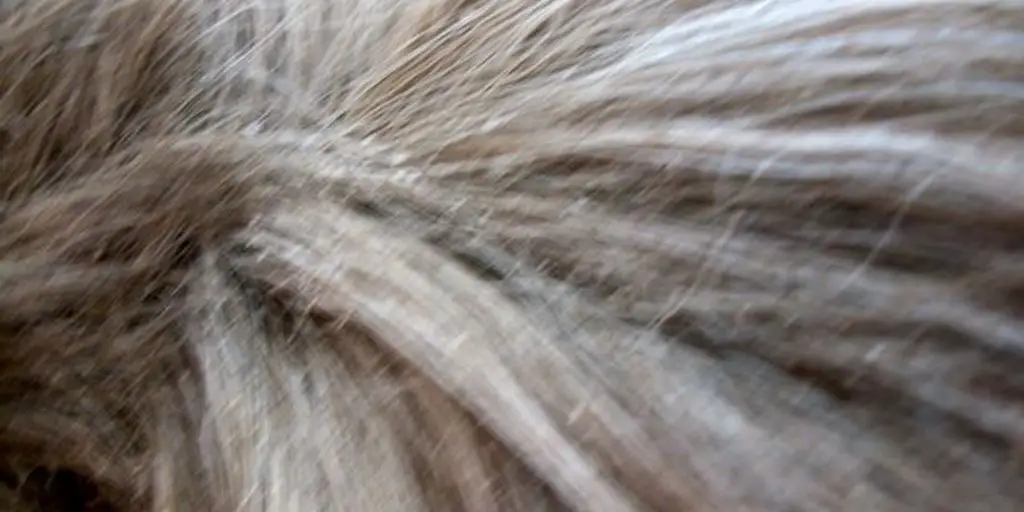Fleas are a common and frustrating problem for dog owners. Recognizing and treating flea eggs on dogs is crucial for preventing infestations and ensuring the health and comfort of your pet. This article provides a comprehensive guide on how to spot flea eggs, understand the flea life cycle, identify symptoms of flea infestations, and implement effective treatments and preventative measures.
Key Takeaways
- Flea eggs are tiny, oval-shaped, and off-white, making them difficult to spot on your dog without careful inspection.
- Common areas to check for flea eggs include your dog’s lower back, belly, ears, and tail, where fleas tend to congregate.
- Understanding the flea life cycle is essential for effective treatment, as it helps in targeting not just the adult fleas but also the eggs and larvae.
- Effective flea treatments for dogs include topical treatments, oral medications, and natural remedies, each with its own set of benefits.
- Preventative measures such as regular grooming, home cleaning, and the use of preventative products are key to keeping your dog flea-free.
Spotting Flea Eggs on Your Dog

When it comes to spotting flea eggs on your dog, it can be quite a challenge. These tiny pests are often hard to see with the naked eye, but knowing where and how to look can make a big difference. Flea eggs are usually tiny white specks, almost like grains of salt, and they tend to be clustered together. They are most commonly found on the lower back and belly of dogs, but you might also spot them around the ears and tail. Fleas and their eggs love warmth, so make sure to check all the warm parts of your dog’s body.
Understanding the Flea Life Cycle
When it comes to dealing with fleas, knowing their life cycle is crucial. Fleas go through four main stages: egg, larva, pupa, and adult. Each stage requires different approaches for effective control.
Stages of Flea Development
Fleas have a fascinating yet troublesome life cycle. They start as eggs, which hatch into larvae. These larvae then spin cocoons and become pupae. Finally, they emerge as adults ready to feed on your dog’s blood. The entire cycle can be as short as two weeks or stretch out to a year, depending on environmental conditions.
How Flea Eggs Spread
Flea eggs are laid on your dog but often fall off into the environment. This means they can end up in your carpet, bedding, or yard. Every time your dog scratches, shakes, or lies down, they spread these eggs around, making it easier for a full-blown infestation to occur.
Why Flea Eggs Are Hard to Spot
Flea eggs are tiny and almost invisible to the naked eye. They are usually white and oval-shaped, making them blend in with their surroundings. This is why using a magnifying glass can be helpful in detecting them. Because they are so small, they can easily be mistaken for dandruff or dust, adding to the challenge of identifying them.
How Dogs Get Flea Eggs
Common Sources of Flea Eggs
Dogs can pick up flea eggs from various places. Fleas lay eggs on their host, which then fall off and spread throughout the home. This means your dog can get flea eggs from infested areas where they sleep or play. Additionally, outdoor environments like parks or yards can be hotspots for fleas, especially if other animals frequent these areas.
Environmental Factors
Fleas thrive in warm, humid environments. If your home or yard provides these conditions, it can become a breeding ground for fleas. Regularly treating your home with flea preventatives and vacuuming frequently can help minimize the risk. Fleas and their eggs love warmth, so be extra vigilant during the warmer months.
Interaction with Other Animals
Your dog can also get flea eggs through interaction with other animals. Whether it’s a playdate with another dog or an encounter with wildlife, these interactions can lead to flea infestations. It’s essential to keep an eye on your dog after such interactions and use preventative measures to protect them.
Symptoms of Flea Infestation in Dogs
Fleas are more than just a nuisance; they can make your dog downright miserable. Recognizing the symptoms of a flea infestation early can help you take swift action to alleviate your dog’s discomfort and prevent further complications. Here are some key signs to watch out for:
Behavioral Signs
One of the first things you’ll notice is your dog engaging in intense and frantic scratching or biting. Flea bites can make your dog’s skin incredibly itchy, leading to constant scratching, biting, or licking. This behavior is often a clear indicator that something is wrong.
Physical Symptoms
Flea infestations can cause a range of physical symptoms, including:
- Red and flaky skin: Flea bites can lead to red, irritated patches on your dog’s skin.
- Hair loss: Persistent scratching and biting can result in bald spots, especially around the back near the tail and on the legs.
- Scabs and hot spots: These can develop from excessive scratching and may become infected if not treated promptly.
Secondary Infections
If left untreated, flea bites can lead to secondary infections. The constant scratching can break the skin, making it susceptible to bacterial infections. In severe cases, your dog might develop flea allergy dermatitis, which can cause even more discomfort and complications.
It’s crucial to address flea infestations as soon as you notice the symptoms. Early intervention can save your dog from a lot of discomfort and prevent more serious health issues down the line.
Effective Flea Treatments for Dogs
Choosing the right flea treatment for your dog can be overwhelming with so many options available. It’s always a good idea to discuss with your vet to find the best solution tailored to your dog’s needs. Here are some of the most effective treatments you can consider:
Topical Treatments
Topical treatments are applied directly to your dog’s skin, usually between the shoulder blades. These solutions spread through the skin’s oils, killing fleas on contact and providing ongoing protection. They are easy to apply and can be very effective.
Oral Medications
Oral medications are ingested and work systemically. They kill fleas when they bite your dog and often disrupt the flea life cycle by preventing eggs from hatching. These are a great option if you prefer not to deal with topical applications.
Natural Remedies
If you’re looking for a more natural approach, there are several options available. Essential oils like lavender and eucalyptus can be effective flea repellents. Homemade flea sprays using ingredients like apple cider vinegar can also help keep fleas at bay.
Protect your dog from pesky fleas and ticks with our expert-vetted picks for the best flea and tick preventatives for dogs, from oral chews to topical solutions.
Remember, the best flea treatment for your dog will depend on various factors, including their health, lifestyle, and any other parasites you need to cover. Always consult your vet to make an informed decision.
Preventing Flea Infestations
Preventing flea infestations is all about being proactive. The goal isn’t just to react to flea problems as they arise but to create an environment where fleas struggle to gain a foothold. Here are some tips to help you keep those pesky fleas at bay.
Regular Grooming
Regular grooming is essential. Not only does it keep your dog looking good, but it also helps you spot any fleas or flea eggs early on. Make grooming a part of your routine, and use a flea comb to catch any fleas before they become a bigger problem.
Home Cleaning Tips
Keeping your home clean is crucial in the fight against fleas. Vacuum regularly to remove flea eggs and larvae from carpets and furniture. Don’t forget to wash your dog’s bedding, toys, and any other items they come into contact with. A clean home is less inviting to fleas.
Preventative Products
There are many preventative products available that can help keep fleas away. From topical treatments to flea collars, find what works best for your dog. Using these products consistently can make a big difference in preventing infestations.
Remember: the goal isn’t just to react to flea problems as they arise but to create an environment where fleas struggle to gain a foothold. A combination of proactive care for your pet, regular cleaning routines for your home, and a commitment to using safe, effective treatments will make all the difference.
When to Consult a Veterinarian

Sometimes, dealing with flea infestations on your dog can be overwhelming, and you might need to seek professional help. Here are some scenarios when it’s best to consult a veterinarian.
Severe Infestations
If your dog’s flea infestation is out of control, it’s time to see a vet. Severe infestations can lead to serious health issues like anemia, especially in puppies or older dogs. A vet can provide expert advice on how long to wait before applying Frontline after using a flea collar and recommend the best treatment plan tailored to your dog’s needs.
Allergic Reactions
Flea bites can cause allergic reactions in some dogs, leading to intense itching, redness, and swelling. If you notice these symptoms, it’s crucial to consult a vet. They can prescribe medications to alleviate the allergic reactions and prevent secondary infections.
Persistent Symptoms
If your dog continues to show signs of flea infestation despite using over-the-counter treatments, it’s time to consult a vet. Persistent symptoms like constant scratching, hair loss, or skin infections need professional attention. The vet can perform tests to rule out other conditions and recommend a more effective treatment plan.
Don’t wait too long to seek help. Early intervention can prevent more serious health issues and make your dog more comfortable.
In summary, while minor flea issues can often be managed at home, severe infestations, allergic reactions, and persistent symptoms require veterinary care. Your vet can provide the best course of action to ensure your dog’s health and well-being.
DIY Flea Treatment Methods

When it comes to dealing with fleas on your dog, sometimes you want to try a more natural approach. Here are some DIY flea treatment methods that you can easily whip up at home.
Long-term Flea Control Strategies
When it comes to keeping fleas at bay, long-term strategies are key. Here are some effective methods to ensure your dog stays flea-free year-round.
Common Myths About Flea Eggs

Myth: Flea Eggs Are Visible to the Naked Eye
One of the biggest misconceptions is that flea eggs are easily visible. Flea eggs are incredibly tiny, about the size of a grain of sand, making them very hard to spot without assistance. You might need a magnifying glass to see them clearly.
Myth: Only Dirty Homes Have Fleas
Many people believe that fleas only infest dirty homes, but that’s not true. Fleas can thrive in any environment where they can find a host, like your dog. Regular cleaning can help, but it’s not a foolproof method to prevent fleas.
Myth: Fleas Only Affect Outdoor Dogs
Another common myth is that only outdoor dogs get fleas. Fleas can hitch a ride on your dog from various places, including your yard, the park, or even from other animals. Indoor dogs are not immune to flea infestations.
It’s essential to understand these myths to better protect your dog from flea infestations. Fleas are persistent and can be a problem regardless of your living conditions or your dog’s lifestyle.
Conclusion
Dealing with flea eggs on your dog can be a real headache, but it’s totally manageable with the right approach. Regular checks, proper grooming, and using effective flea treatments can make a world of difference. Remember, it’s not just about treating your dog but also ensuring your home is flea-free. Stay proactive, and you’ll keep those pesky fleas at bay, ensuring your furry friend stays happy and healthy. If you’re ever in doubt, don’t hesitate to consult your vet for the best advice tailored to your dog’s needs.
Frequently Asked Questions
What do flea eggs on dogs look like?
Flea eggs on dogs appear as tiny white specks, similar to grains of salt. They are oval-shaped and off-white, making them difficult to spot, especially on light-colored fur.
Where are common areas to check for flea eggs on dogs?
Flea eggs are commonly found on the lower back, belly, around the ears, and near the tail of dogs. Fleas prefer warm areas, so it’s important to check all parts of your dog’s body that tend to be especially warm.
How can I detect flea eggs on my dog?
Using a magnifying glass can help you spot flea eggs on your dog. Look for tiny white specks in areas where fleas like to hang out, such as the lower back, belly, ears, and tail.
What are the stages of flea development?
The flea life cycle includes four stages: egg, larva, pupa, and adult. Flea eggs hatch into larvae, which then develop into pupae and eventually emerge as adult fleas.
How do flea eggs spread?
Flea eggs are laid on the host (your dog) but fall off and spread throughout the home. They can infest areas where your dog sleeps or plays, making it essential to treat both your dog and your home for fleas.
What are the symptoms of flea infestation in dogs?
Symptoms of flea infestation in dogs include constant scratching, biting at the skin, red or irritated skin, hair loss, and the presence of flea dirt (tiny black specks) on the skin.
What are some effective flea treatments for dogs?
Effective flea treatments for dogs include topical treatments, oral medications, and natural remedies. It’s important to consult with your veterinarian to determine the best treatment for your dog.
Can I use a flea collar and a topical treatment together?
It’s best to consult with your veterinarian before using a flea collar and a topical treatment together. Some products may interact with each other, so professional advice is recommended to ensure your dog’s safety.



